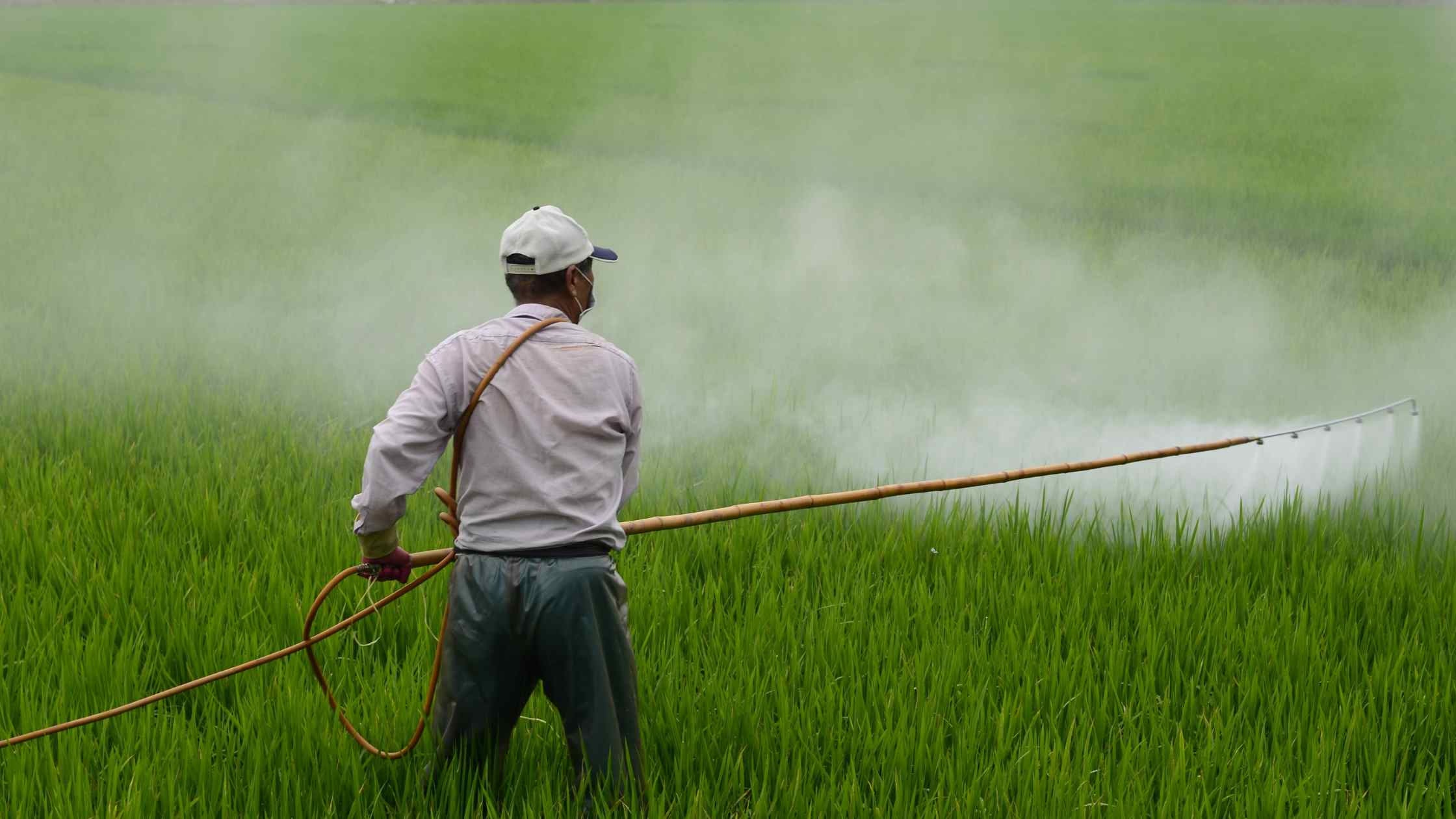Green Academy
Log In
Become a part of our community!
Registration complete. Please check your email.
Create an account
Welcome! Register for an account
The user name or email address is not correct.

After World War II, many people around the world became at-risk for starvation. The ensuing efforts to provide nutritional aid led to the emergence of the Green Revolution. The Green Revolution, also known as the Third Agricultural Revolution, introduced new technologies that vastly improved agricultural production, saving millions of lives (Pingali). Among the newly developed technologies included GMOs (genetically modified organisms), pesticides (particularly herbicides and insecticides), chemical fertilizers, and mechanization. These advancements were invaluable in reducing poverty and alleviating hunger. However, it is time to reassess their impacts on society through a contemporary light.
Developed in the 1940s, DDT is one of the most famous examples of pesticides having unintended effects. During the mid-1900s, DDT became commercially available and widely used for agricultural and household purposes. After bald eagles and other birds were exposed to DDT, they became unable to lay healthy eggs. The eggshells were often too thin, making the eggs impossible to hatch (“The Case of…”). As a result, the bald eagle population plummeted to under a thousand nesting adults (“Bald Eagles”). DDT also caused similar population declines in other species, including the peregrine falcon and the osprey. Rachel Carson’s book Silent Spring was one of the first efforts to successfully attract the attention of the public. A decade later, DDT was banned. DDT can still be found in humans and the overall food web. The exact effects of DDT are currently unclear, but it is considered to be a possible carcinogen. It is also known to induce seizures and vomiting at high degrees of exposure (Dichlorodiphenyltrichloroethane (DDT) factsheet).
Also developed in the 1940s was Agent Orange. It was used as a chemical herbicide and defoliant. Similar to DDT, Agent Orange devastated the ecosystem and endangered human health. During the Vietnam War, the U.S. military sprayed mass amounts of Agent Orange with the purpose of reducing forest cover. Over the course of the war, around 20 million gallons of Agent Orange were sprayed throughout Vietnam, Cambodia, and Laos. In the coming years, Agent Orange defoliated nearly 12,000 square miles of forest and severely reduced biodiversity (History.com Editors). Moreover, Agent Orange proved to cause numerous afflictions, including diabetes, heart disease, cancer, miscarriages, impaired fetal development, and immune system dysfunction. An estimated two million people have suffered from illness tied to Agent Orange. The deadly herbicide has continued to impact people long after the Vietnam War, causing countless miscarriages and half a million birth defects (“Agent Orange”). Many US veterans and their families also became the victims of Agent Orange. As the public opposition increased and the detrimental effects became apparent, Agent Orange was banned in the US in 1971.
Today, about 5.6 billion pounds of pesticides are used globally each year (Alavanja). While efforts have been made to reduce toxicity, there are still major concerns about human and environmental exposure. In many developing countries, contamination and safety practices are largely not in place, meaning pesticides have a higher likelihood of doing damage. One of the biggest concerns is water contamination. Pesticides can runoff into various water sources, which introduces risks to humans and other organisms. Exposure to pesticides through water consumption can lead to cancer, Parkinson’s disease, reproductive issues, and hormone disruption (Syafrudin).
It is unrealistic to completely ban the use of pesticides due to the increasing demand of food and agricultural products. Pesticides are also imperative to preventing the spread of diseases transmitted by insect vectors, such as malaria, in developing countries (Aktar). It is also essentially impossible to fully remove the risk of pesticides. For pesticides to effectively kill pests/weeds, they must be toxic at least to some degree. However, actions can be taken to develop less toxic pesticides and limit exposure to pesticides. Better containment practices, protection, and preventative measures can greatly reduce the hazardousness of pesticides. The Environmental Protection Agency has also imposed Maximum Residue Limits to regulate the amount of pesticides present in our food. Lastly, new techniques are being developed that are less dependent on pesticides. For example, vertical farming involves growing crops in a controlled indoor environment where pests are less prevalent. However, vertical farming is also far from perfect. Because of its use of artificial light to replace sunlight, it has extremely high energy costs and carbon emissions (Park). Moving away from pesticides has another benefit as well. Over time, many species have been able to develop resistance to specific pesticides. In response, manufacturers must produce new chemicals that are effective. Using alternatives would end this vicious cycle and prove to be more sustainable in the long run.
In conclusion, the use of pesticides can greatly increase agricultural production and ease the hunger of the growing population. On the other hand, it harms the ecosystem and threatens human health. Passing stricter regulation regarding pesticide use, promoting proper pesticides handling, raising public awareness, and implementing heftier punishments for pesticide spills/leaks will be vital in efforts to control pesticide exposure. A more long-term approach would be to develop non-chemical alternatives for pest control.
Works Cited
“Agent Orange.” Encyclopædia Britannica, 17 May 2023, www.britannica.com/science/Agent-Orange.
Alavanja, Michael C R. “Introduction: pesticides use and exposure extensive worldwide.” Reviews on environmental health vol. 24,4 (2009): 303-9. doi:10.1515/reveh.2009.24.4.303
Aktar, Md Wasim et al. “Impact of pesticides use in agriculture: their benefits and hazards.” Interdisciplinary toxicology vol. 2,1 (2009): 1-12. doi:10.2478/v10102-009-0001-7
“Bald Eagle.” Smithsonian’s National Zoo, nationalzoo.si.edu/animals/bald-eagle. Accessed 21 May 2023.
“The Case of DDT: Revisiting the Impairment.” Environmental Protection Agency, 12 July 2022, www.epa.gov/caddis-vol1/case-ddt-revisiting-impairment. “Dichlorodiphenyltrichloroethane (DDT) Factsheet.” Centers for Disease Control and Prevention, 16 Aug. 2021, www.cdc.gov/biomonitoring/DDT_FactSheet.html.